Question
If all the persons are arranged alphabetical order in
Row 2, from the left end to the right end, then how many persons remain unchanged from their previous position? Study the following information carefully and answer the below questions. Twelve students are seated on the school ground opposite each other. In row1, A, J, K, L, M, and N are facing south. In row2- S, E, D, G, V and R are facing north. All the information is not necessarily in the same order. M sits opposite to the one who sits third to the left of G. Either M or G are sitting at the end of the row. Only one person sits between M and N. The number of persons sitting to the left of N is the same as to the right of R. Only two persons are sitting between R and the one who sits opposite to A. The number of persons who sits between A and N is the same as between V and S.V and R are not immediate neighbours. D sits to the right of E and does not face A.K sits to the left of L and to the right of J.Solution
M sits opposite to the one who sits third to the left of G. Either M or G is sitting at the end of the row. From the above condition, there are two possibilities. 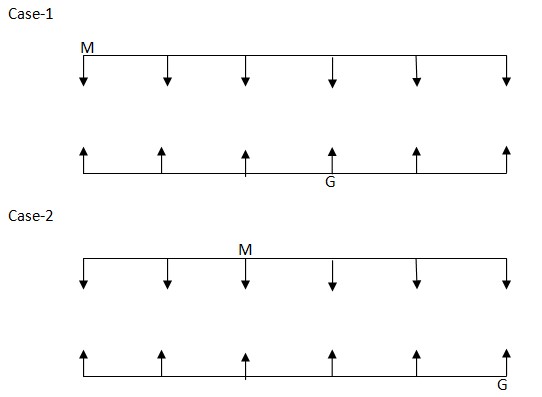 Only one person sits between M and N. The number of persons sitting to the left of N is the same as to the right of R. From the above condition, there are three possibilities.
Only one person sits between M and N. The number of persons sitting to the left of N is the same as to the right of R. From the above condition, there are three possibilities. 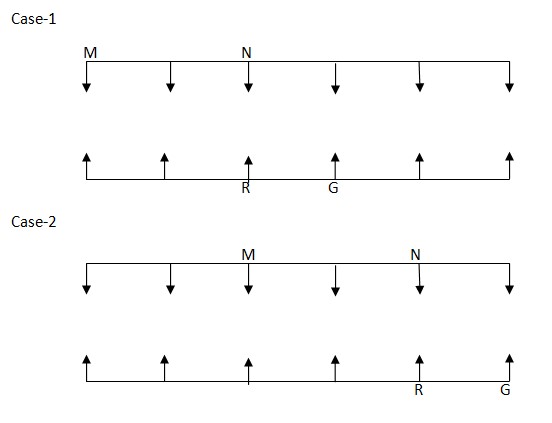
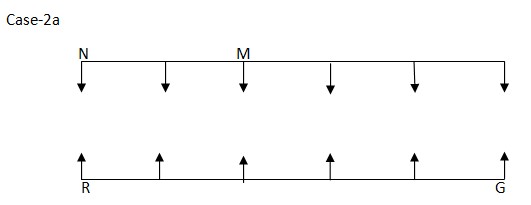 Only two persons are sitting between R and the one who sits opposite to A. The number of persons who sits between A and N is the same as between V and S. V and R are not immediate neighbors. D sits to the right of E and does not face A. From the above condition, case1 and case2a get eliminated. Case-2
Only two persons are sitting between R and the one who sits opposite to A. The number of persons who sits between A and N is the same as between V and S. V and R are not immediate neighbors. D sits to the right of E and does not face A. From the above condition, case1 and case2a get eliminated. Case-2 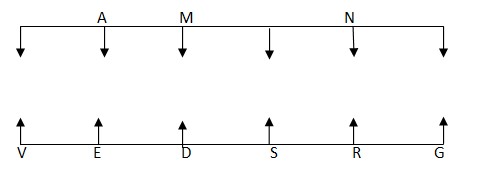 K sits to the left of L and to the right of J. From the above condition, case2 shows the final arrangement.
K sits to the left of L and to the right of J. From the above condition, case2 shows the final arrangement. 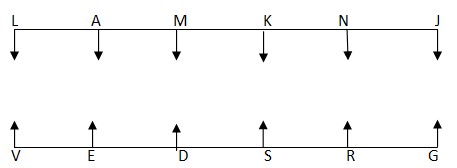
Who is the publisher of the Ride, a racing video game?
In each of the following questions, a word printed in Capital letters is followed by four numbered words or phrases. Choose the one, which is most nearl...
Which of the following persons was honoured with the highest award of the Central European University Open Society Award in June 2021?
The duration of the 12th five year plan was from _______ to ________.
Under the Government of India Act 1935, who was the first elected Chairman of Bihar Legislative Council ?
The East-West corridor, which is a part of the Golden Quadrilateral super highways, links which two cities of India from the following?
In February 2022, West Bengal government launched an open-air classroomprogramme for students from Class 1 to 7, by the name ________.
As per the recent (August 2024) Statement on Developmental and Regulatory Policy by the RBI, what is the new limit for UPI for tax payment?
Who sets a Guinness World Record for almost 59 side lunges in just 60 seconds?
The renamed Untouchability (Offences) Act, 1955 is now known by which of the following names?


